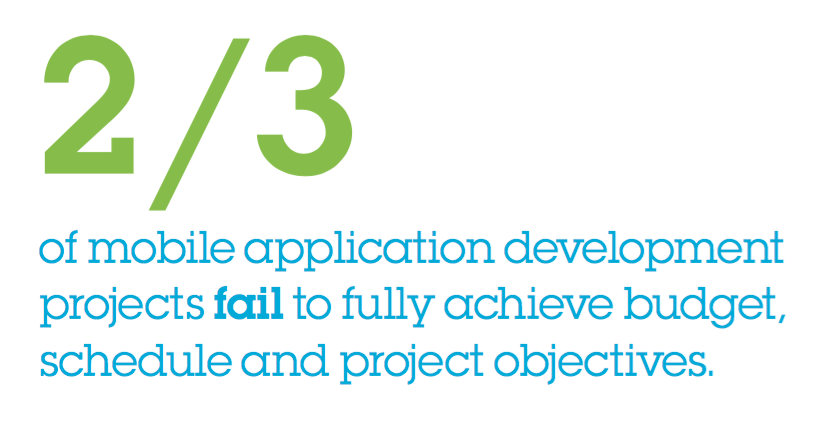To gain insight into successful mobile application development practices , the IBM Center for Applied Insights surveyed 585 developers and development managers from nine countries who are either coding or managing mobile application development projects.

Only one-third of the respondents say their mobile application development projects achieve the three criteria for success—fully meeting budget, schedule and project objectives.
What’s their secret?
You might guess that the size of the development team or use of a particular technology would make a difference between success and failure when it comes to mobile application development. However, across many factors—including team size, programming language, operating system, platform used, and native vs. web vs. hybrid implementation—we found no statistical differences between the successful projects and others.
So what does make a difference?
We found that successful projects share four characteristics.
First, a seasoned cast is vital. Not only do the star teams have the necessary mobile development experience, they also have the right business and industry expertise.
Second, they use cloud-based platforms and mobile application development platforms more heavily. Greater flexibility can set the stage for faster time-to-market and greater agility as mobile technologies change.
Third, developers collaborate closely with the entire ecosystem, including design, user experience, quality assurance, IT operations, business stakeholders and end users. As with any production, collaboration throughout the process keeps everything running smoothly.
Finally, successful project teams don’t just pay attention to the ratings and reviews. They are more likely to analyze user behavior and gain inspiration based on what they learn.
With the right team and the right approach, mobile development projects are positioning themselves to fully achieve all three success criteria—budget, schedule and project objectives.





